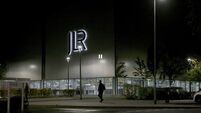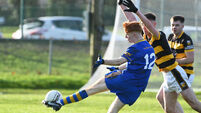Ex-IRA commander leaves legacy of peacemaking though his own dream is unfulfilled

HOW striking the familiar can be. Yesterday evening, we saw the coffin of IRA leader-turned-statesman, Martin McGuinness, being carried shoulder high through the streets of Derry to his family home by his sons Fiachra and Emmet.
Draped in a brilliantly crisp clean tricolour, McGuinness’s coffin was watched by thousands of mourners on its route back to his home.
















